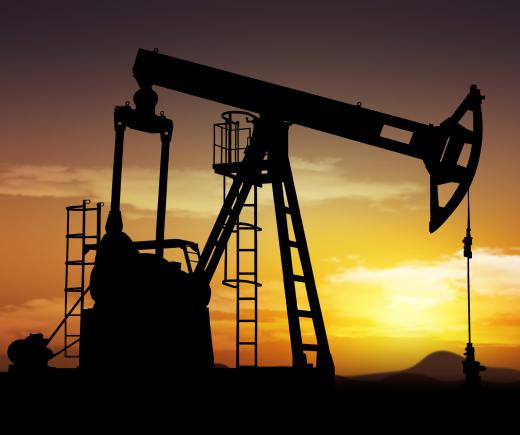Hydraulic fracturing is a method used to break oil and gas-containing rock formations, creating passageways for the fuel to flow from the rock to a producing well. This is accomplished by using hydraulic pressure to inject a fluid containing sand or some other abrasive material into the rock with enough force to cause cracks. The technology is used to stimulate the flow of oil or gas in new wells and to revive production in wells that had been considered depleted.
The process of hydraulic fracturing was developed in 1903, but it took over forty years before the technology was first used commercially in 1948. The majority of producing wells in the US and throughout the world employ hydraulic fracturing, including wells in countries such as Mexico, Brazil, France, the UK, Columbia, Argentina, Romania, Venezuela, Indonesia and Russia. Fracturing is considered a valuable mechanism for increasing domestic energy production by making previously unreachable reserves accessible.

Hydraulic fracturing is also a key to making shale oil development financially feasible. Gas producers claim that the majority of the shale reserves in the United States are in rocks which cannot be accessed without fracturing. Shale is sedimentary rock made from compressed clay, silt and organic plant material. This rock is not permeable, which means it does not allow liquids to pass through, so extracting gas from shale requires fracturing.

Hydraulic fracturing involves pumping a liquid through a well into an underground rock formation using enough pressure to cause cracks in the rock. The most common liquid agent is water, though in some instances diesel fuel, crude oil, diluted hydrochloric acid or kerosene may be employed. The water is mixed with a few chemicals and guar, a natural substance made from beans, which gives the water a gel-like consistency. The water mixture is primarily a delivery system for a propping agent, usually a granular substance such as sand or aluminum pellets, which keeps the crack open after the water is drawn back.
Hydraulic pressure is used to pump the water mixture through a drill pipe or tubing and into the rock. After the water has created several cracks within the rock formation, the pressure is released and the water retracts into the well. The cracks begin to close, but are “propped” open by the sand or other propping agent, allowing the gas or oil a pathway to flow toward the well. Well casings and cement are installed as a part of the process to prevent the escape of fluids from the well into the water table.
Small traces of the liquid mixture remain in the rock, and the presence of toxic chemicals in the mix has been a cause for environmental concern. Technological advances are continually being made to prevent any seepage of containments into the water table. In the United States, the Environmental Protection Agency (EPA), the Ground Water Protection Council (GUPC) and the Interstate Oil and Gas Compact Commission (IOGCC) have all conducted tests to determine the environmental impact of hydraulic fracturing. Tests conducted by the EPA have included shallow wells which are most likely to constitute a threat to ground water. In every case, the tests have been unable to detect any negative environmental impact.
